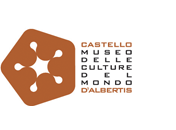Very few original heraldic totem poles of the indigenous peoples of the north-west coast of Canada have been preserved. These totems, as well as those of the northern portion of Washington state and southern Alaska (United States), were commissioned to special craftsmen. They had to summarize conceptually the life and the family crest, the deeds and the social rank of the client in the best possible way. Some were up to 15 meters high. It took months to carve them, during which time the customer, in addition to paying lavishly and in kind the craftsman, had to support his family. Upon the death of the client, the descendants let them slowly decay to the elements of time to commission new ones in turn. This custom continued until about 1940, that is, until the heads of the families could economically afford this kind of realization.
Today’s heraldic totems are only symbolic of a culture that far from being extinct, still survives in dire straits. Starting in the early 1900s, some "whites" commissioned the same craftsmen replicas of totems that the craftsmen had already made for their clients. The replicas were carved more crudely and sometimes on a slightly smaller scale in order to facilitate transportation. Very few examples even of this type survived. In our case the craftsman dissected the replica into four portions, the fifth and last are missing and probably depicted an eagle with spread wings (90 cm at the base and in succession 100 cm; 115 cm. The cusp is 83 cm).
The totems were raised a few meters away from the place of realization: either in front of or on the side of the client's house.
All heraldic totems must be interpreted from the bottom up to the top. In the first stage the client of the building is depicted holding a paddle in his hands; that is the typical symbol of fishermen, in this particular case, of whale hunters. In the second block we notice an eagle perched on his head, that reveals the power and physical and spiritual abilities of the hunter. In the third block we can distinguish a bear, the clan of family membership, and an orca: hunting whales was indeed prerogative of and limited to a few privileged people.
Finally, in the fourth block we can see a frog and a so-called "bird of thunder," both spirits helping the whaler. The frog for his capacities and animistic qualities is able to live and survive in two worlds: the aquatic one and the terrestrial one. The thunderbird is instead the subliminal and absolute motif of
positive forces of celestial creative luminosity.




